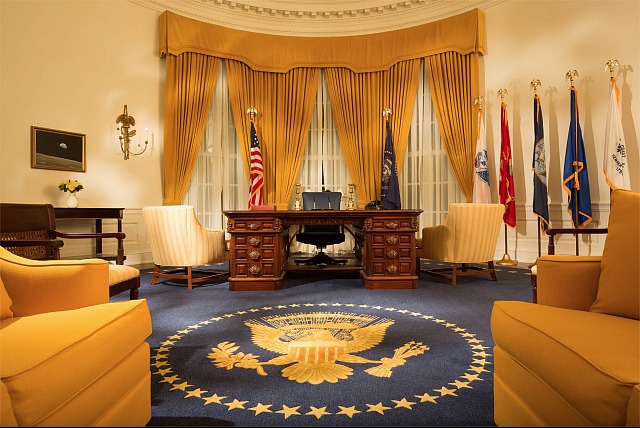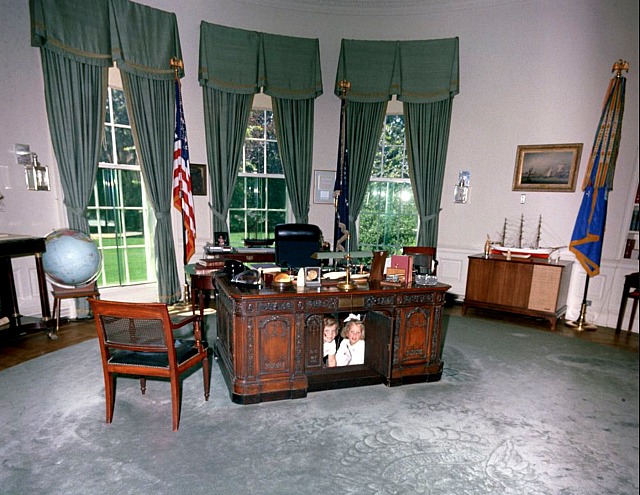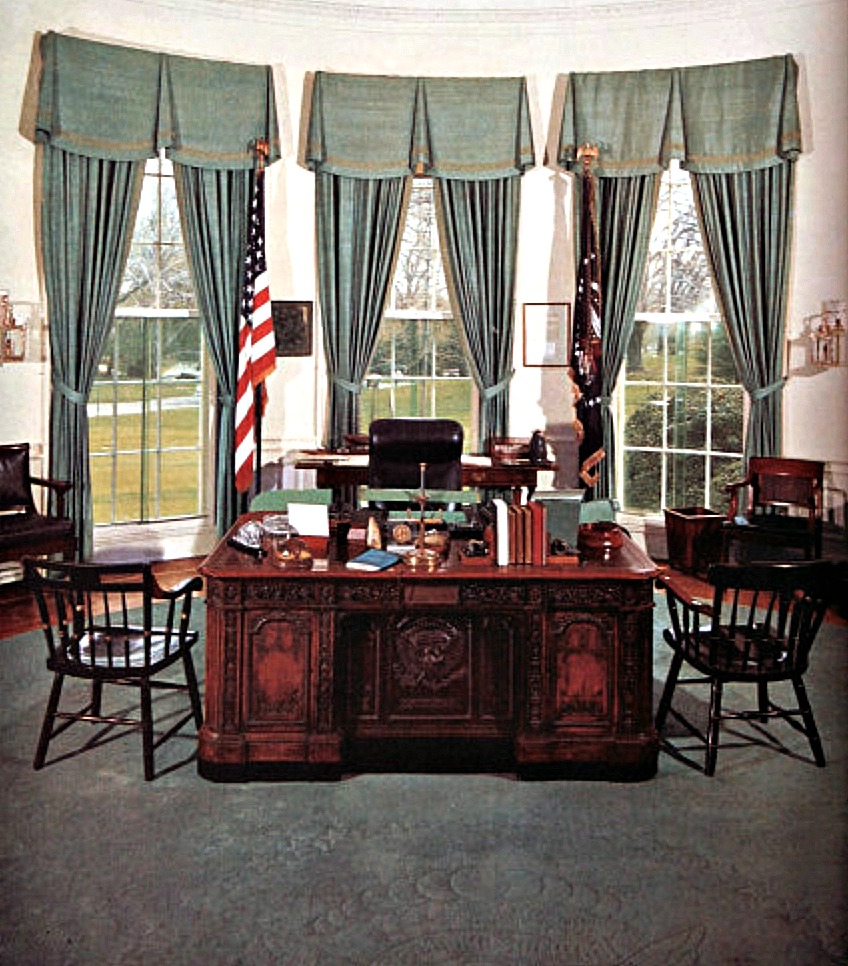Last night I re-watched Roger Donaldson‘s Thirteen Days, a generally absorbing drama about the 1962 Cuban Missile Crisis. I hadn’t seen this New Line release since it opened in 2000. By any fair standard it’s well done, fairly gripping, decently acted, tightly edited. I didn’t miss a line or a plot turn.
Based on “The Kennedy Tapes” and told from the perspective of President John F. Kennedy (Bruce Greenwood), Attorney General Robert F. Kennedy (Steven Culp) and appointments secretary Kenny O’Donnell (Kevin Costner), David Self‘s screenplay covers all of the particulars, and there are many scenes that I found riveting.
My favorite episode follows a low-altitude photo reconnaissance mission over Cuba by Navy pilot William Ecker (Christopher Lawford) and another fighter jock. Prior to leaving Ecker is ordered by O’Donnell to not get shot down, as such an event would force JFK to respond militarily, which would lead to war. Ecker understands what O’Donnell is saying and agrees to play the game.
He flies and snaps photos over Cuba and is strafed all to hell by Russian and Cuban bullets. Back at a U.S. air base, Ecker insists that the holes in the wings were caused by flying sparrows. When questioned by Air Force General Curtis LeMay (Kevin Conway) about whether he was fired upon, Ecker says “it was a cakewalk, sir.”
Costner was a senior producer, and he used that leverage to amplify O’Donnell’s insignificant role during this complex political drama into that of a senior player, so he’d have a meatier role to play. (Or something like that.)
After seeing the film, Kennedy’s Defense Secretary Robert McNamara (very well played, incidentally, by Dylan Baker) said that O’Donnell “didn’t have any role whatsoever in the missile crisis…he was a political appointments secretary to the President…that’s absurd.”
The duties performed by O’Donnell in the film, McNamara said, were closer to the role Kennedy speechwriter Ted Sorensen played during the actual crisis. McNamara: “It was not O’Donnell who pulled us all together…it was Sorensen.”
The only thing that really doesn’t work are the knowing or haunted or alarmed “looks” that the principal sympathetic players give each other. (And which are performed to help the chumps in the audience understand the concerns that these characters had at various junctures.) In actuality nobody gave anyone a “look” about anything during this crisis, trust me, because that would have conveyed emotional distress or vulnerability to any antagonist or disloyal participant in the room who happened to notice.
Greenwood is a particular problem in this regard because all he does for the most part is roll his eyes and glare daggers and sweat bullets when the notion of military conflict of any kind is discussed. You’re watching him go through the paces and you can’t help but think “this isn’t working…Greenwood just can’t bring it.”
The poor guy does a reasonably good job of handling JFK’s dialogue, so to speak, but he’s doomed by the fact that he’s unable to exude even a fraction of Kennedy’s preternatural cool and charisma — Greenwood is a good Canadian actor as far as it goes but JFK was a glam political superstar, and Greenwood just doesn’t have it.
Plus his JFK wig is way out of whack. How the makeup and hair people blew it this badly is astonishing. We all know what Kennedy’s thick auburn hair looked like with the brushed upsweep, and the Greenwood thatch doesn’t even resemble it. It’s like “what were they thinking?”
“10 Best Fictional Presidents,” posted on 78.8.21:
Working backwards from today, here are (a) Hollywood Elsewhere’s ten best fictional presidents and (b) best portrayals of historical presidents in feature films. Yes, I’m allowing for Saturday Night Live and other comedic portrayals.
FICTIONALS (in order of preference): 1. Lee Tracy, The Best Man; 2. Peter Sellers, Dr. Strangelove, 3. Jack Warden, Being There; 4. Donald Moffat, Clear and Present Danger; 5. Henry Fonda, Fail Safe; 6. John Heard, My Fellow Americans, 7. Harrison Ford, Air Force One; 8. Jeff Bridges, The Contender; 9. Walter Huston, Gabriel Over The White House; 10. Kevin Pollak, Deterrence.
JOE BIDEN: Jim Carrey on SNL. 2nd Best — Jason Sudeikis, SNL.
DONALD TRUMP: Thomas Mundy. 2nd best — Jeff Bergman, Our Cartoon President. 3rd best — Brendan Gleeson, The Comey Rule.
BARACK OBAMA: No opinion. Okay, SNL’s Jay Pharoah was fairly decent.
GEORGE W. BUSH: Josh Brolin, W., 2nd best — Will Ferrell, You’re Welcome America. A Final Night with George W Bush (B’way)
BILL CLINTON: Darrell Hammond, SNL.
GEORGE H.W. BUSH: Dana Carvey, SNL.
RONALD REAGAN: Phil Hartman, SNL. 2nd best — Tim Matheson, Killing Reagan.
JIMMY CARTER, GERALD FORD: Nobody. (Chevy Chase made no attempt to impersonate Ford.)
RICHARD NIXON: Rip Torn, Blind Ambition.
LYNDON JOHNSON: Randy Quaid, LBJ: The Early Years (’87).
JOHN F. KENNEDY: There’s never been a truly first-rate JFK, ever. That said, Bruce Greenwood wasn’t too bad in Roger Donaldson‘s Thirteen Days. Worst — William Devane, The Missiles of October.
DWIGHT D. EISENHOWER: Nobody.
HARRY TRUMAN: James Whitmore, Give ‘Em, Hell, Harry!
FRANKLIN D. ROOSEVELT: Ralph Bellamy, The Winds of War and Sunrise at Campobello.
THEODORE ROOSEVELT: Brian Keith, The Wind and the Lion.
ULYSSES S. GRANT: Justin Salinger, Grant.
ABRAHAM LINCOLN: Daniel Day Lewis, Lincoln.
“Son of Oval Office Recall,” posted on 8.1.20:
Originally posted on 4.2.08: 25 years ago Oliver Stone did me a great favor, and I’ve thanked him at least two if not three times since. In ’95 he and publicist Stephen Rivers arranged for me to pay a brief visit to the Nixon West Wing — Oval Office, cabinet room, hallways, various offices, etc.
Production designer Victor Kempster had built the amazingly detailed set (including an outdoor portion with grass and bushes) on a massive Sony sound stage.
I was allowed in just after Stone and his cast (including Anthony Hopkins) and crew had finished filming. It was sometime around February or March of ’95. I wrote up my impressions for an L.A. Times Syndicate piece. Nixon opened on 12.20.95.
The Nixon unit publicist (or somebody who worked for Rivers) escorted me onto the stage and left. Nobody was around; I had the place all to myself. I had a video camera with me and shot all the rooms, and took my time about it. I was seriously excited and grateful as hell for the opportunity because it was, in a sense, better than visiting the real Oval Office in the real White House, which I would have never been allowed to do even if I’d been best friends with someone in the Clinton administration.

Nixon’s oval office.

JFK’s subdued variation.
Every detail was Eric von Stroheim genuine. Wooden floors, real plaster, ceilings, rugs, moldings, early 1970s phones, bright gold French aristocracy drapes, china on the shelves and mantlepiece, etc.
Five years later I was granted a visit to a replica of Jack Kennedy‘s West Wing that had been used for the shooting of Roger Donaldson‘s Thirteen Days. It was around the same time of year — February or March of 2000, roughly nine or ten months before the movie’s release in December. The set had been built by production designer Dennis Washington inside a warehouse-type sound stage somewhere in southern Glendale or Eagle Rock.
The difference between the Nixon Oval Office decor — creamy beiges and bright golds, a bright blue rug, gilded bric a bracs on the shelves (which contributed to a kind of effete, faux-aristocratic atmosphere) — and the subdued greens, browns and navy blues of JFK’s office (which even had a replica of the coconut shell that Lt. Kennedy used to carve out a message during his PT 109 adventure) will always stay in my mind.
You can tell a lot about people from the decor in their homes and workplaces. Only an arrogant know-nothing would have chosen the nouveau-riche wooden floor that Bush had installed in ’05. The White House is a place of great history, echoes and ghosts, and it should look and feel like it’s been hanging in there for at least a century or so — stressed floors, old timber and dark varnish, like the early 20th Century and 19th Century homes that are found in the northeast.
These visits were as close as I’m ever going to get to the real Oval Office — they gave me a real organic window into recent history. Even if I’d been invited to the real White House I wouldn’t have had the chance to poke around and study everything at my leisure.

